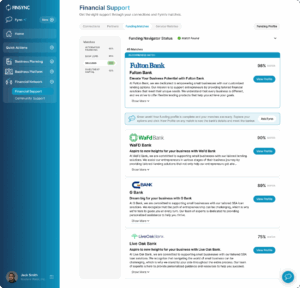If you are seeking funding to start or expand your business, a well-crafted business plan is your first step. It helps you clarify your ideas and gives funders the confidence to invest. Whether applying for a loan, pitching to investors, or going after a grant, your plan is essential. Match the format to your audience. It could be a one-page canvas, a five-page summary, or a detailed 60-page report with a slide deck.
Table of Contents
Why Capital Is Hard to Get Without a Business Plan
Many business owners struggle to secure funding because their ideas aren’t clearly defined. Funders need more than passion. They want to understand the risks, your strategy, how you’ll utilize the money, and, most importantly, how to repay it on time. Without that clarity, they will move on. A strong plan shows you are prepared and serious.
What Investors and Lenders Look for in a Business Plan
A business plan demonstrates to funders that you are prepared. It outlines how your business works, what it needs, and why it is worth the investment. Here are the basics they expect:
- Executive Summary: A one-page overview that includes what your business does, who it serves, how much funding you need, and what it is for.
- Problem & Solution: What problem do you solve, and how does your approach work? Use real examples or research.
- Market Opportunity: Who your customers are and how large your market is. Include local data if relevant.
- Business Model: How you make money, your pricing, and your cost structure.
- Marketing Plan: How you plan to reach and retain customers.
- Team: Who is running the business, and what experience do they bring to the table?
- Financials: Projections for the next 12–36 months, including expenses and revenue.
- Funding Request: How much funding do you need, and how will you utilize it to drive growth?
Want help building a business plan that checks all the right boxes? You’re not alone. Let us know if this is something you’re interested in.
What Makes a Business Plan Stand Out
Some business plans take it a step further by sharing personal insights and demonstrating traction. Funders are often interested in your story. Explain why you started this business and what drives you to succeed. If you have already made sales or generated customer interest, include that information.
If your business serves a local community, explain how it benefits that area. Some lenders and grant programs prioritize economic development and community impact.

![]()
Matching the Plan to the Right Type of Capital
Different types of capital have different expectations. Your plan should reflect that.
- Bank loans: Provide detailed financials and a repayment plan.
- Angel investors: Show growth potential and a clear exit strategy.
- Grants or Microloans: Highlight your community impact.
- Crowdfunding: Share a strong story that motivates support.
Tools and Templates That Can Help
You do not need to start from scratch. FINSYNC’s Funding Navigator (see how it works) is a powerful resource that helps you build a clear, lender-ready business plan while also connecting you with funding opportunities that fit your business. It guides you step by step, making it easier to organize your information and strengthen your case for capital.
If you are still shaping your idea, FINSYNC’s Canvas and Business Plan creator help you refine it before building a full plan. You can also explore templates from the SBA or SCORE.

Your Business Plan Is More Than a Document
A strong business plan gives you direction and helps you avoid costly mistakes. More importantly, it shows that your business is ready for funding. A clear, thoughtful plan improves your chances of securing the capital you need.
You can revise your plan as things change. Successful entrepreneurs review and update their business plans every 6 to 12 months to reflect, adjust, and stay on track. Always match the plan to your next audience, even if that audience is just you.

